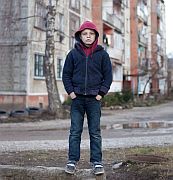
FRIDAY, Dec. 5, 2014 (HealthDay News) — About one-third of children in large U.S. cities live in poverty, a new report finds.
In 2013, the poverty rate among children in the nation’s 71 largest cities was nearly 31 percent, compared with nearly 20 percent for all children in the country. Although the national child poverty rate fell 2 percent from 2012 to 2013, it decreased only 1 percent in the largest cities, the report added.
“Many Americans — even policymakers — seem unaware of the shocking prevalence of child poverty in many of our nation’s most important and iconic cities,” said Curtis Skinner. He is director of family economic security at the National Center for Children in Poverty at Columbia University in New York City.
The 2013 child poverty rate in big cities was 4 percent higher than the pre-recession rate in 2007 of just over 26 percent, said the researchers who used the most recent U.S. Census figures.
In Detroit, the child poverty rate is nearly 60 percent, which is 10 percent higher than in 2007. Most children in Cleveland and Buffalo live in poverty, as well as nearly half of youngsters in Fresno, Calif.; Cincinnati and Memphis, the figures showed.
Other cities with the highest levels of child poverty include Newark, Miami, St. Louis and Milwaukee.
Seven of the 10 cities with the highest child poverty rates have seen those rates rise by 8 percent or more since 2007. The greatest increase — 16 percent — was in Fresno, the report found.
“Reducing child poverty is critical to the social and economic health of cities, now and in the future,” Skinner said in a university news release.
Policymakers at all levels of government need to recognize the “pandemic of urban child poverty,” Renee Wilson-Simmons, director of the Center for Children in Poverty, said in the news release.
“We have a tool chest of proven anti-poverty policies, but lack the political will to use them,” she said. “Because children do better when families do better, it’s essential that two-generation approaches have a central place in the domestic policy agenda.”
The path out of poverty, she said, would combine education and training for parents to enable them to move to jobs that offer high-quality early care and education for children.
For the study, “large” cities were defined as those with a population of 250,000 or more in 2007.
More information
The Children’s Defense Fund has more about child poverty.
Copyright © 2025 HealthDay. All rights reserved.

